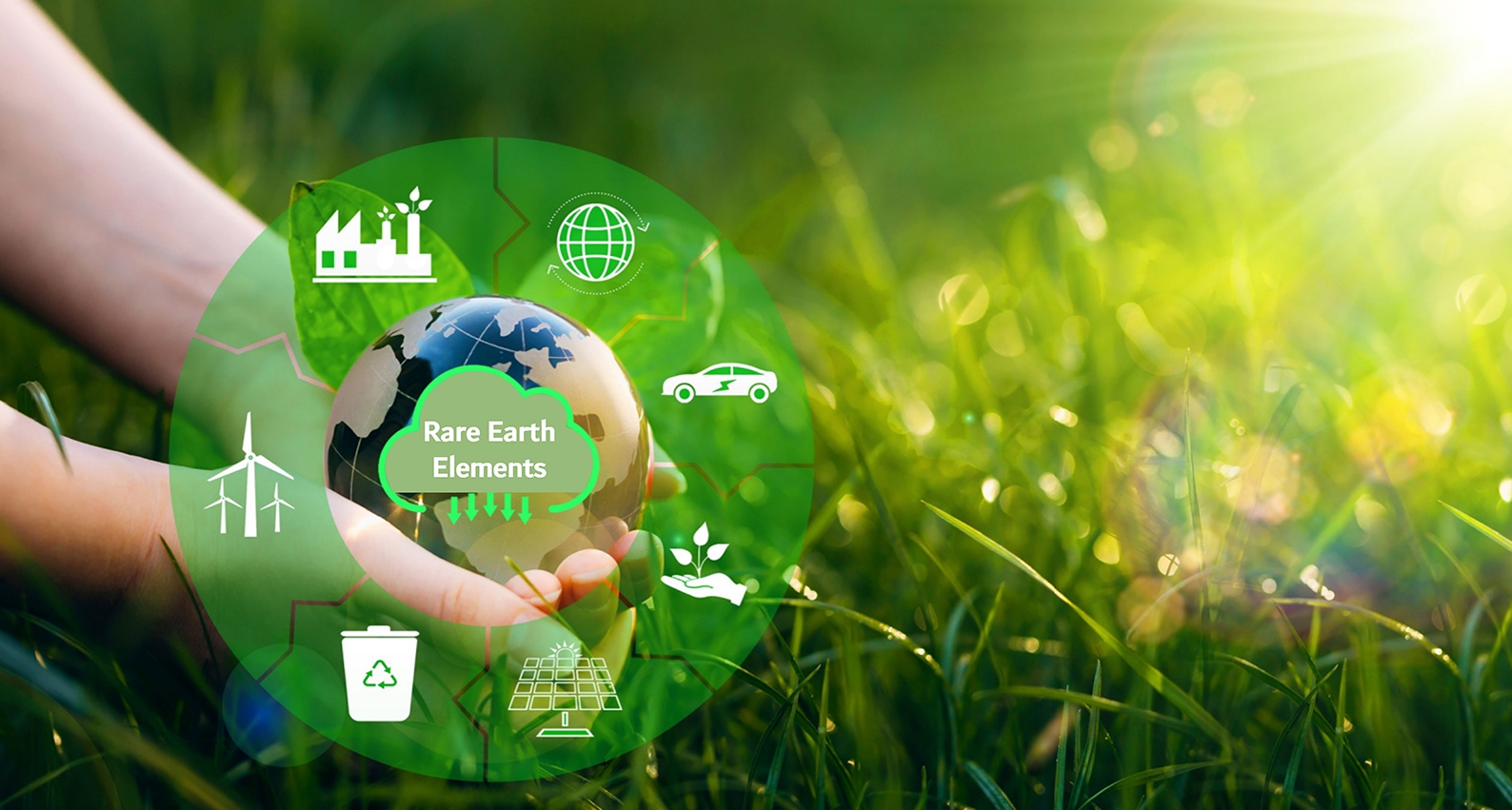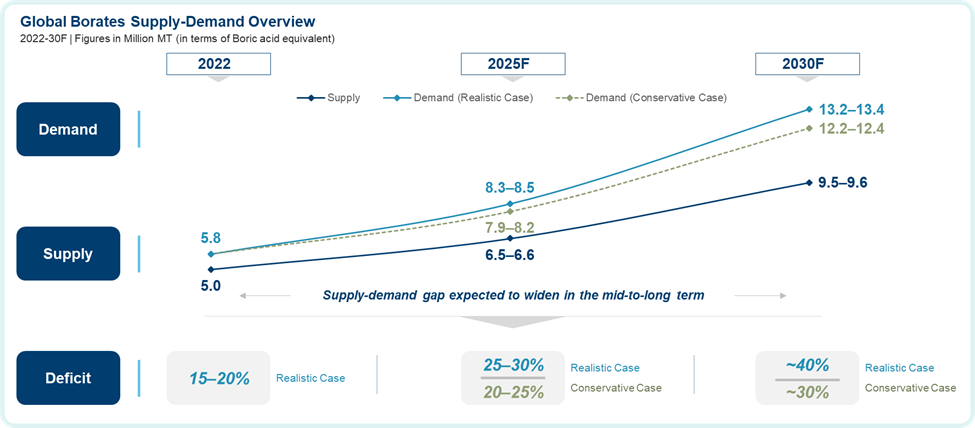Boron Revolution 2030 – Quest for Resilience Amidst Supply–Demand Disparity
Published on 08 Jun, 2023

The decarbonization-led future with applications of e-mobility, wind energy, and solar energy is expected to drive an unprecedented rise in demand for boron and its derivatives. However, with no major supply expansions in the immediate pipeline, the supply–demand disparity is anticipated to widen, leading to a 25–40% projected price upsurge in the next 4–5 years. Therefore, reassessing supply chains and developing resilience to maintain competitiveness is crucial for companies in industries such as glass/composites, industrial manufacturing, automotive components, ceramics, and chemicals. It is imperative for procurement heads to secure future supplies by outlining forward-aligned sourcing strategies.
In the era of technological revolution, wherein future-facing applications are at the forefront of demand growth, supply chain disruptions and uncertainties abound. Rare earth elements, alternatively referred to as supercritical materials, particularly boron-based derivatives, play a pivotal role as key inputs in new-age technologies and sustainable energy solutions. The rising demand from future applications combined with controlled supply and limited growth in new capacities, is expected to widen the supply–demand gap for boron.
Widening Supply–Demand Dichotomy

The demand for boron-based derivatives, specifically borates, is expected to grow 1.5–2.5 times during 2025–30. In this period, the deficit situation is expected to widen steeply due to no proportionate increase in supply. This widening deficit is primarily attributed to the potentially increased demand expected from decarbonization-led applications, in contrast to the limited supply capacity expansions, as detailed below.
- Decarbonization-Led Applications Driving the Demand Shift
- Decarbonization-related applications are projected to account for 65–75% of the overall demand for boron-based derivatives by 2030, from the current share of 20–30%.
- Future-facing application industries, such as e-mobility (~20% CAGR), wind energy (~25% CAGR), and solar energy (~18% CAGR), among others will be the focal points of growth.
- The rising use cases across these new-age applications, encompassing fiberglass, composites, magnets, and other high-strength requirements, are expected to drive demand.
- The Asia-Pacific region, led by China, is expected to be the primary contributor to the increased demand, followed by the US and Europe.
- Decarbonization-related applications are projected to account for 65–75% of the overall demand for boron-based derivatives by 2030, from the current share of 20–30%.
- Constrained Supply Worsening the Disparity
- No new short-term supply: Upcoming supplier plans are unlikely to rationalize the supply–demand disparity in the short- to mid-term period (until 2025).
- Tightly controlled supply: Shifting Turkey's focus toward local boron processing and the dwindling supply from the top-producing countries are expected to keep the supply tight.
- Regulatory issues: Environmental concerns and regulatory hurdles have resulted in project cancellations and revokes, as seen in the case of Rio Tinto in Serbia.
- Other operational issues: Sanctions on Russia (the second-largest holder of boron reserves) leading to supply restrictions and limited recyclability of the material, are other critical concerns.
Thus, limited growth in the new capacities and tighter control of Turkey on the existing supply, in conjunction with the rising demand from de-carbonization-led applications such as e-mobility, wind, and solar energy, are expected to widen the current supply–demand gap of 15–20% up to 40% by 2030.
Exponential Price Rise – The Disparity Repercussion
The aftermath of the supply–demand disparity is expected to drive the prices of boron-based derivatives, particularly boric acid and borax.
Boric acid prices having witnessed a sharp increase of 115–125% post–2020 are expected to elevate further by 30–40% in the next 4–5 years as the demand is expected to be primarily driven by the future-facing applications. Similarly, the prices of Borax increased 25–40% since 2020 and are expected to elevate 20–25% during the forecast period on account of sustained demand from traditional applications (detergents, fireproofing materials, food security, etc.)
Therefore, the widening supply–demand disparity for boron will lead to a surge in future prices, which calls for urgent attention from sourcing heads across key organizations.
Recommendations
The boron revolution is imminent. Therefore, it is imperative for global procurement leads/category managers across glass/composites, industrial/energy, auto components, ceramics industries, and other traditional industries, such as food security, chemicals, and pharmaceuticals, to build resilience by revisiting their supply chains and securing future supplies. Following are some select strategies:
- Leverage multiple suppliers (existing +1 strategy) to maintain a balanced mix and mitigate future supply risks
- Explore strategic partnerships, establish long-term contracts, and sign Letters of Intent (LOIs)
- Outline a forward-aligned pricing approach by considering advances/pre-payments and incorporating special clauses to hedge price risks
Procurement research can advise companies in future-proofing their end-to-end supply chains.
